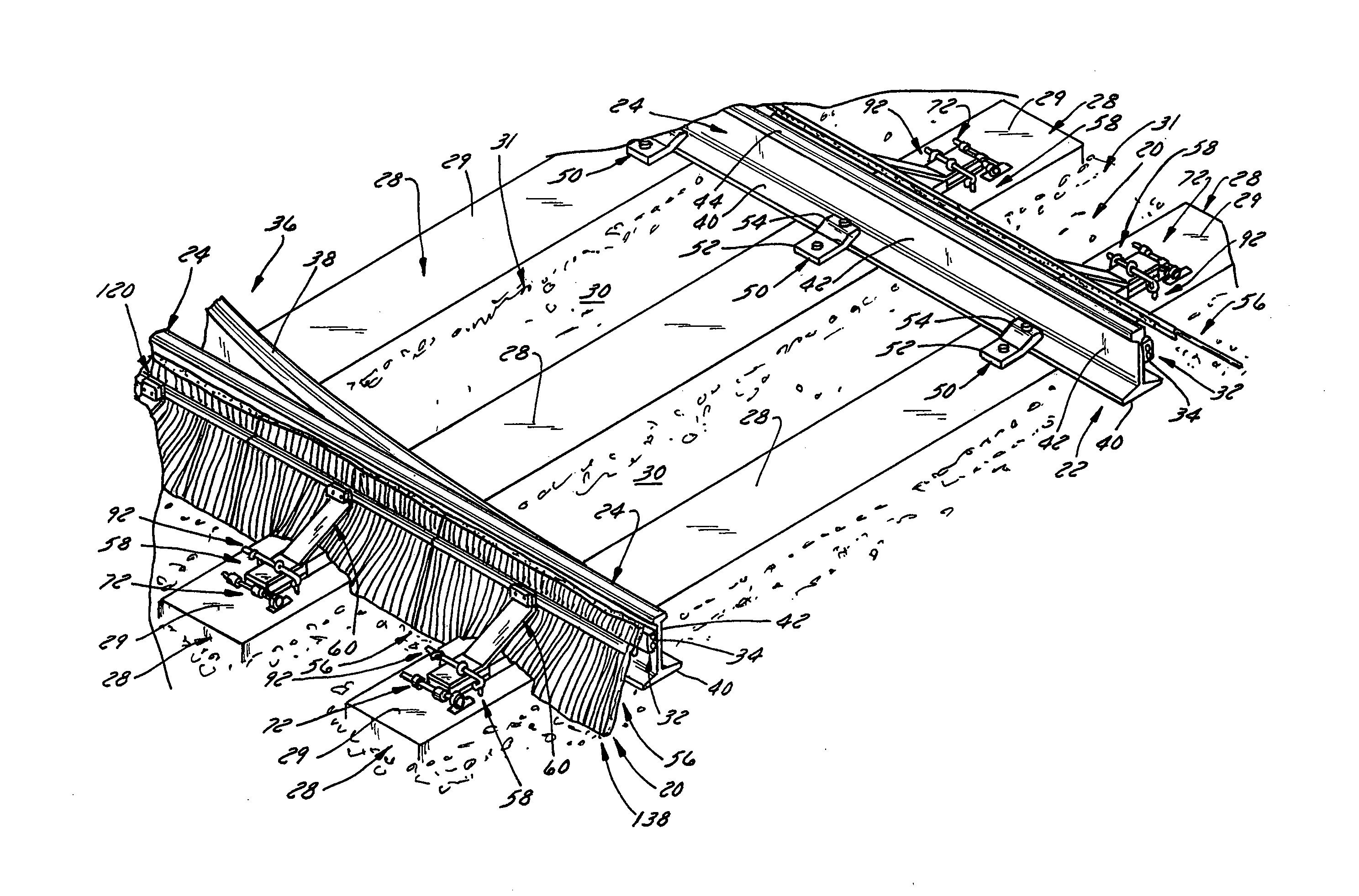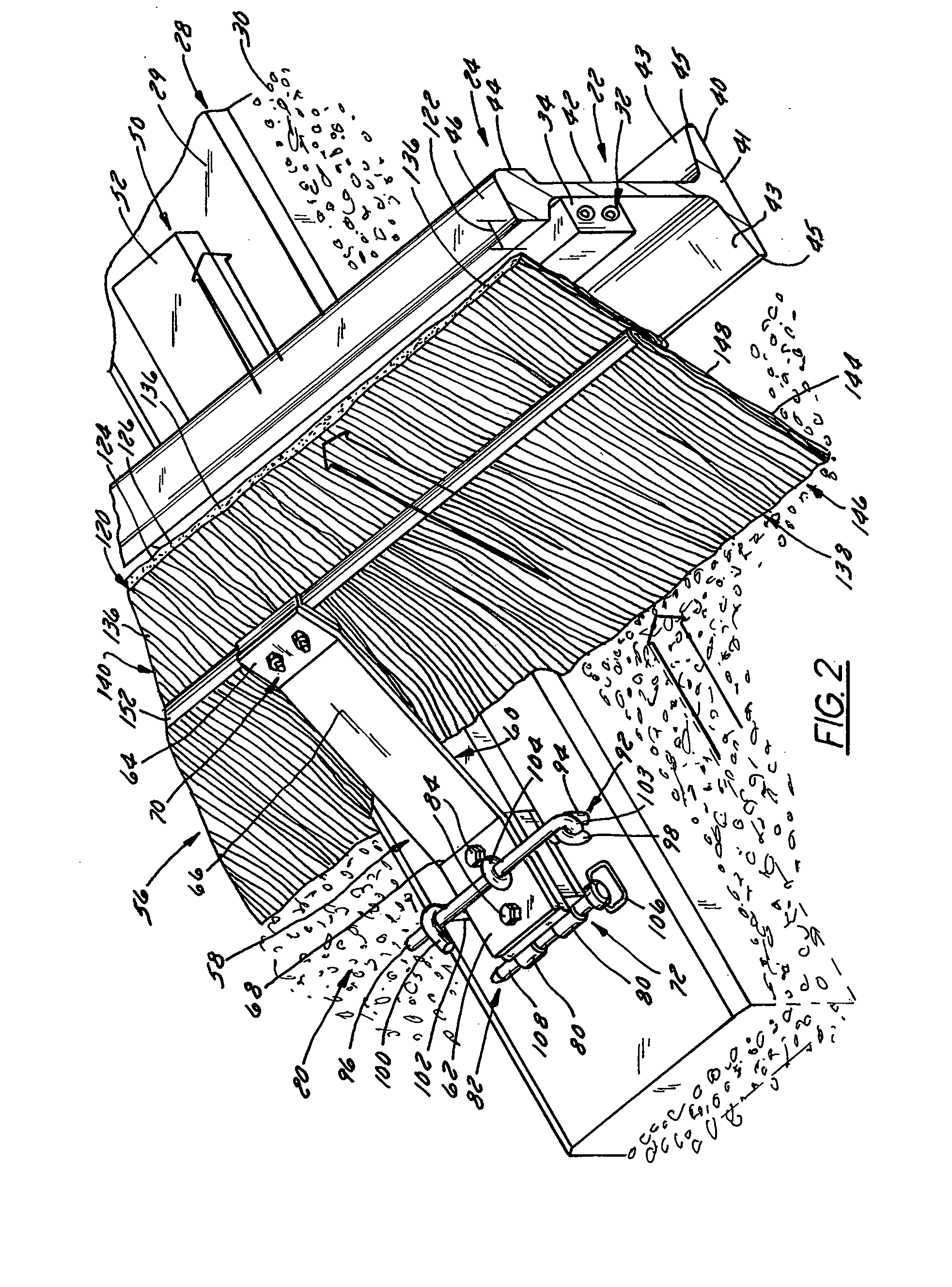Railway Track And Switch Weather Protection Barrier System
- Summary
- Abstract
- Description
- Claims
- Application Information
AI Technical Summary
Benefits of technology
Problems solved by technology
Method used
Image
Examples
Embodiment Construction
[0036]Referring now to the drawings, and initially to FIG. 1, a pair of weather protecting barrier systems 20 for use with railroad tracks 22 according to the present invention is illustrated with each barrier system 20 extending alongside a corresponding rail 24 of a set of railroad or railway tracks 22 supported on transversely extending railroad ties or sleepers 28 carried by a bed 30 of gravel or rock. Each barrier system 20 typically is located alongside a switch clearing system 32, such as one employing a switch or rail heater 34, used to help keep a switch or turnout 36 operable in cold weather. Such a switch or turnout 36 typically includes one or more switch rails 38 movable relative to a set of fixed rails 24 enabling a train or railway cars of a train to be switched from one set of tracks to another set of tracks. While the switch clearing system 32 shown in FIG. 1 employs a switch or rail heater 34 attached to each rail 24 between the barrier system 20 and adjacent rail ...
PUM
 Login to View More
Login to View More Abstract
Description
Claims
Application Information
 Login to View More
Login to View More - R&D
- Intellectual Property
- Life Sciences
- Materials
- Tech Scout
- Unparalleled Data Quality
- Higher Quality Content
- 60% Fewer Hallucinations
Browse by: Latest US Patents, China's latest patents, Technical Efficacy Thesaurus, Application Domain, Technology Topic, Popular Technical Reports.
© 2025 PatSnap. All rights reserved.Legal|Privacy policy|Modern Slavery Act Transparency Statement|Sitemap|About US| Contact US: help@patsnap.com



